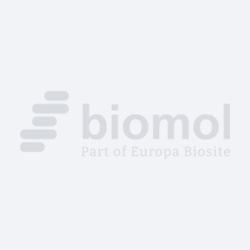Cookie preferences
This website uses cookies, which are necessary for the technical operation of the website and are always set. Other cookies, which increase the comfort when using this website, are used for direct advertising or to facilitate interaction with other websites and social networks, are only set with your consent.
Configuration
Technically required
These cookies are necessary for the basic functions of the shop.
"Allow all cookies" cookie
"Decline all cookies" cookie
CSRF token
Cookie preferences
Currency change
Customer-specific caching
FACT-Finder tracking
Individual prices
Selected shop
Session
Comfort functions
These cookies are used to make the shopping experience even more appealing, for example for the recognition of the visitor.
Note
Show the facebook fanpage in the right blod sidebar
Statistics & Tracking
Affiliate program
Conversion and usertracking via Google Tag Manager
Track device being used
If you have any questions, please use our Contact Form.
You can also order by e-mail: info@biomol.com
Larger quantity required? Request bulk
You can also order by e-mail: info@biomol.com
Larger quantity required? Request bulk
Secreted leucine-rich repeat-containing proteins 1-3 (Slit1-3) are secreted glycoproteins that... more
Product information "Anti-SLIT2"
Secreted leucine-rich repeat-containing proteins 1-3 (Slit1-3) are secreted glycoproteins that influence axonal guidance and mediate normal neural development by acting as high-affinity signaling ligands for the repulsive guidance receptor, Roundabout (Robo. Within the developing central nervous system (CNS) of different vertebrate systems, Slit proteins are expressed in equivalent regions, suggesting a conserved function among vertebrate homologs. Slit is expressed in the midline of the central nervous system in both vertebrates and invertebrates, where it functions as a regulatory factor of mesodermal cell movement during gastrulation. Slit2 is a short range inhibitory guidance cue for retinal ganglion cell (RGC) axons that may mediate spatial progression of RGCs. Protein function: Thought to act as molecular guidance cue in cellular migration, and function appears to be mediated by interaction with roundabout homolog receptors. During neural development involved in axonal navigation at the ventral midline of the neural tube and projection of axons to different regions. SLIT1 and SLIT2 seem to be essential for midline guidance in the forebrain by acting as repulsive signal preventing inappropriate midline crossing by axons projecting from the olfactory bulb. In spinal chord development may play a role in guiding commissural axons once they reached the floor plate by modulating the response to netrin. In vitro, silences the attractive effect of NTN1 but not its growth- stimulatory effect and silencing requires the formation of a ROBO1-DCC complex. May be implicated in spinal chord midline post- crossing axon repulsion. In vitro, only commissural axons that crossed the midline responded to SLIT2. In the developing visual system appears to function as repellent for retinal ganglion axons by providing a repulsion that directs these axons along their appropriate paths prior to, and after passage through, the optic chiasm. In vitro, collapses and repels retinal ganglion cell growth cones. Seems to play a role in branching and arborization of CNS sensory axons, and in neuronal cell migration. In vitro, Slit homolog 2 protein N-product, but not Slit homolog 2 protein C-product, repels olfactory bulb (OB) but not dorsal root ganglia (DRG) axons, induces OB growth cones collapse and induces branching of DRG axons. Seems to be involved in regulating leukocyte migration. [The UniProt Consortium]
| Keywords: | Anti-SLIT2, Anti-SLIL3, SLIT2 Polyclonal Antibody |
| Supplier: | Elabscience |
| Supplier-Nr: | E-AB-13664 |
Properties
| Application: | WB, IHC, ELISA |
| Antibody Type: | Polyclonal |
| Conjugate: | No |
| Host: | Rabbit |
| Species reactivity: | human, mouse, rat |
| Immunogen: | Synthetic peptide of human SLIT2 |
| Format: | Purified |
Database Information
| KEGG ID : | K06839 | Matching products |
| UniProt ID : | O94813 | Matching products |
| Gene ID : | GeneID 9353 | Matching products |
Handling & Safety
| Storage: | -20°C |
| Shipping: | 4°C (International: -20°C) |
Caution
Our products are for laboratory research use only: Not for administration to humans!
Our products are for laboratory research use only: Not for administration to humans!
Information about the product reference will follow.
more
You will get a certificate here
Viewed












